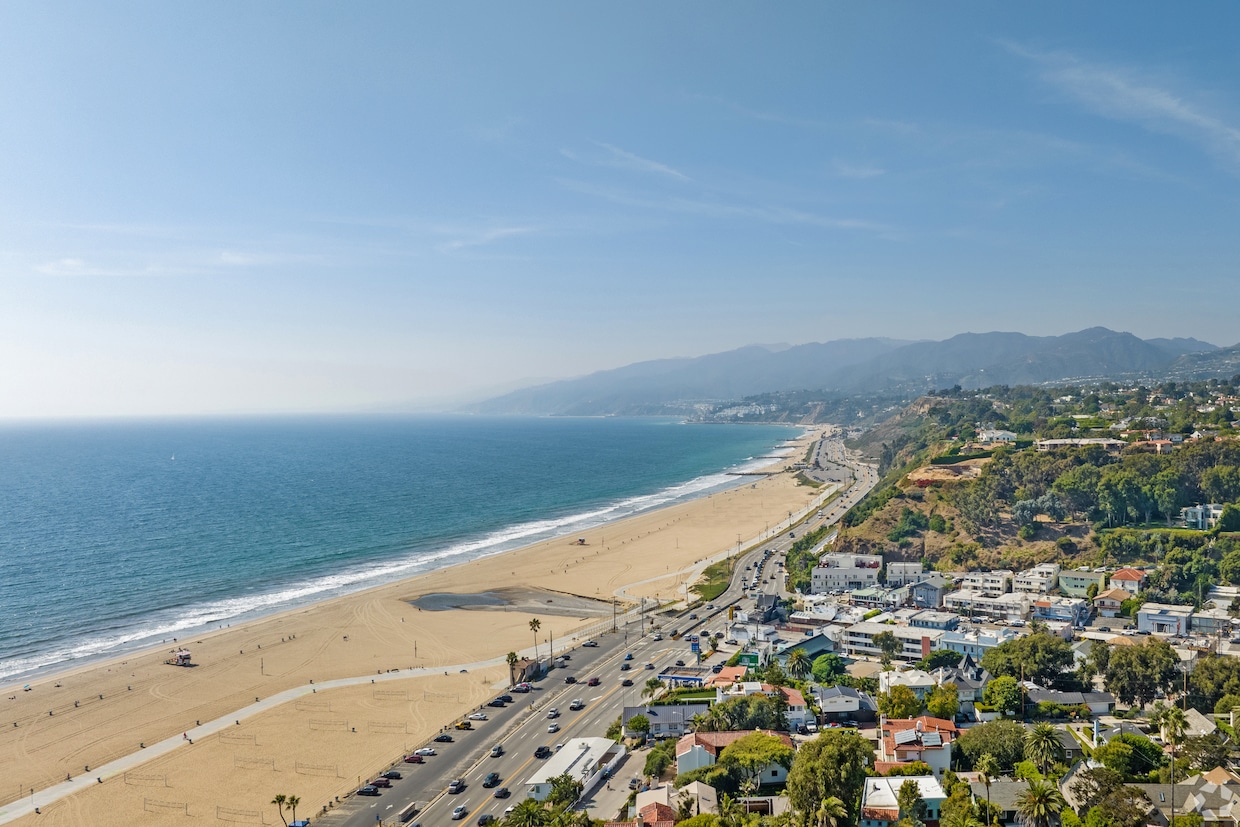When David Berg and F. Ron Smith listed a four-bedroom, three-and-a-half-bath house in Santa Monica for sale last month, they listed it at around the area's median price of $5.19 million.
Eleven days and 17 offers later, the roughly 3,600-square-foot home in the North of Montana neighborhood had sold — for 24.2% more than asking.
Marco Rufo, a real estate agent with The Agency, has witnessed the other side of that kind of sale.
"I was involved in five different offers on properties,” he told Homes.com in an interview. “We have not gotten a property yet because of how crazy over [asking] the other ones went.”
It's not a new phenomenon: North of Montana is considered one of the most exclusive and luxurious neighborhoods along the coast of Los Angeles. But it's one that's gotten markedly more competitive — and pricey — since January. That's when a spate of wildfires tore through Los Angeles, destroying roughly 5,500 homes in another of the region's most desirable neighborhoods, Pacific Palisades.
Now, as displaced residents look to start fresh or wait for their rebuild to finish, many are turning to nearby North of Montana, putting pressure on the neighborhood's already tight housing market.
Demand from displaced residents is making North of Montana pricier
As of Tuesday, the median sale price for homes in the North of Montana neighborhood over the last 12 months was $5 million, according to Homes.com. That’s a 21% increase from the previous 12 months.
Those effects are tangible on the ground, too, local real estate agents said.
“We’re seeing pricing that should be about $1,400 to $1,500 per square foot going for $2,200,” Rufo said. “A lot of the deals are all cash, and then also very qualified buyers — the ones that are not cash.”

More than that, homes are selling after 39 days on the market, faster than the national 52-day average.
“It was a very desirable place to live with limited inventory before, but since the fire, you’ve had piqued interest and more interest than you had before, which has driven prices to go up,” Berg, an agent with the Smith & Berg Property Group of Compass, told Homes.com in an interview.
While North of Montana has always been a competitive market, the demand that's taken shape in the last few weeks is especially strong, and it's expected to continue, according to real estate agents.
In fact, rather than deter homebuyers, the competition has signaled that the market is hot, drawing more attention, Rufo added, explaining that there are already more homes hitting the market now that people see the recent movement.
“There’s going to be people that take advantage of that,” he said. “There’s people that are trying to get people that have their homes in North of Montana rented and they’re trying to get those renters out so they could sell the property.”
A second wave of relocations for Palisades residents
In the near immediate aftermath of January’s fires — which also damaged Malibu and the Altadena area — displaced residents moved quickly to find housing.
At the time, local real estate agents reported two trends: an influx of demand in the Santa Monica market and a stream of residents moving south to neighborhoods in Newport Beach and Orange County to distance themselves from the fires.
“It’s a frenzy,” Mauricio Umansky, CEO and founder of Beverly Hills-based brokerage The Agency, said in an earlier interview.
Now, almost nine months after the fire, it seems like a second wave of movement is underway as displaced Palisades residents are reevaluating and making more permanent decisions, according to local real estate agents.
Some of these residents "either didn’t like where they rented, sort of immediately, or they didn’t like where they bought,” Frank Langen, a Compass agent in Santa Monica, told Homes.com in an interview. “A lot of people that are fire victims are looking again or are still looking or are starting to look."

Rufo told Homes.com he’s working with three sets of displaced Palisades residents who are looking to buy in North of Montana after initially relocating further south.
“They moved into rentals, and they made very quick, blunt moves into rentals because insurance was paying,” he said. “They want out…They don’t like it down there. They liked it when they first went down there, but it’s not the Palisades.”
Ripple effects from the wildfires
All told, the demand for North of Montana real estate is just the latest example of a ripple effect of January’s wildfires, and it could be indicative of another shift in the response to the disaster as residents make more concrete decisions about rebuilding, or not.
“Most of the sales I’ve been involved in have actually been people with younger children who are like, just want to hit the reset button and they don’t want to wait it out,” Berg said. “It’s instant gratification rather than having to wait it out.”
There’s also the question of where Palisades residents will go if they choose not to rebuild. North of Montana is emerging as one of the favorites, especially for those residents with roots in the West L.A. area, according to Langen.
“A lot of people are realizing that they’re not going to build, and now they’re looking to buy because they’ve got kids and grandkids in Los Angeles,” he said.
Even as the effects of the fires come into focus more clearly, Berg said one thing's for sure, people still want to live in Los Angeles, and they still want to live in the Pacific Palisades.
“It’s not like a mass exodus where everyone’s like, ‘I’m out of here,’” he said.

